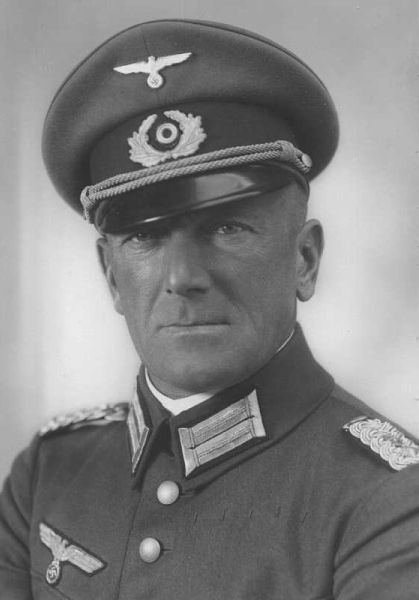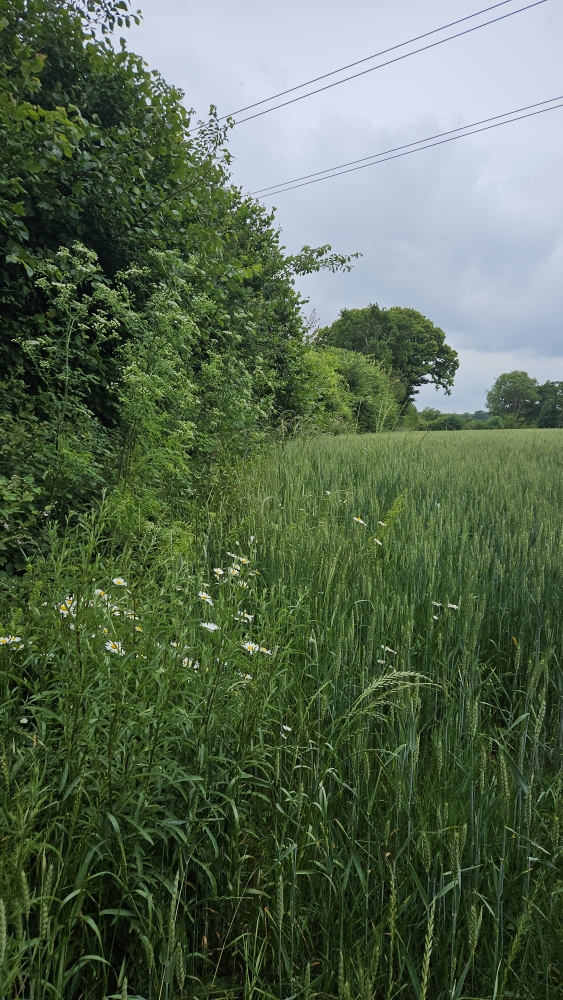Meindl, Eugen Albert Max
- Date of birth:
- July 16th, 1892 (Donaueschingen/Baden, Germany)
- Date of death:
- January 24th, 1951 (Munich/Bavaria, Germany)
- Nationality:
- German
Biography
Was recommended to receive the Eichenlaub mit Schwertern to the Ritterkreuz. Up till now no formal confirmation of any awarding has ever been found.
Promotions:
July 27th, 1912: Fahnenjunker;
March 22nd, 1913: Fähnrich;
February 17th, 1914: Leutnant (Patent February 21st, 1912);
April 18th, 1917: Oberleutnant;
August 1st, 1924: Hauptmann;
April 1st, 1934: Major;
August 1st, 1936: Oberstleutnant;
April 1st, 1939: Oberst (RDA April 1st, 1938);
January 1st, 1941: Generalmajor;
February 1st, 1943: Generalleutnant (RDA October 1st, 1942);
April 1st, 1944: General der Fallschirmtruppe.
Career:
July 27th, 1912: 5. Badisches Feldartillerie-Regiment Nr. 76;
?: Kriegsschule;
?: Batterieoffizier 5. Badisches Feldartillerie-Regiment Nr. 76;
?: Adjutant Artillerie-Kommando 52;
?: Batterieoffizier Reichswehr-Artillerie-Regiment 13;
?: Batterieoffizier 5. (Hess.-Württ.) Artillerie-Regiment;
?: 5. (Bad.) Batterie / 5. Artillerie-Regiment, Wiblingen;
October 1st, 1924: Stab 5. Division, Stuttgart;
October 1st, 1926: Heeres-Organisations-Abteilung (T 2), Reichswehrministerium (RWM), Berlin;
October 1st, 1927: Stab, II. (Bad.) Abteilung / 5. Artillerie-Regiment, Ulm an der Donau;
October 1st, 1928: Chef, 1. (Hess.) Eskadron, 5. Fahr-Abteilung, Ulm an der Donau;
Ocotber 1st, 1929: Adjutant, Stab 5. Artillerie-Regiment, Fulda;
September 15th, 1933: Artillerieschule Jüterborg;
October 15th, 1935: Kommandeur I. / Artillerie-Regiment 5, Ulm;
November 10th, 1938 - augustus 1940: Kommandeur Gebirgs-Artillerie-Regiment 112, Graz;
June 1940: Kommandeur Gruppe Meindl, Narvik;
August 1940: Führerreserve OKH;
September 1st, 1940: Kommandeur Luftlande Sturm-Regiment 1;
May 16th, 1941: Führer Kampfgruppe West;
Winter 1941/1942: Kommandeur Kampfgruppe Meindl;
February 26th, 1942: Kommandeur Luftwaffen-Division Meindl;
September 26th, 1942: Kommandierender General XIII. Fliegerkorps / Kommandierender General I. Luftwaffen-Feld-Korps;
August 1st, 1943: Inspekteur der Luftwaffen-Inspektion 18 "Lw.-Feldverbände", Reichsluftfahrtministerium;
November 1943: Kommandierender General II. Fallschirmkorps;
May 25th, 1945 - September 29th, 1947: US POW.
Do you have more information about this person? Inform us!
- Period:
- First World War (1914-1918)
- Awarded on:
- July 18th, 1915
- Period:
- First World War (1914-1918)
- Awarded on:
- January 17th, 1916
- Period:
- Second World War (1939-1945)
- Rank:
- Oberst (Colonel)
- Unit:
- Kommandeur, Gebirgs-Artillerie-Regiment 112, 3. Gebirgs-Divison, Heer
- Awarded on:
- October 22nd, 1939
- Period:
- Second World War (1939-1945)
- Rank:
- Oberst (Colonel)
- Unit:
- Kommandeur, Gebirgs-Artillerie-Regiment 112, 3. Gebirgs-Divison, Heer
- Awarded on:
- June 10th, 1940
- Period:
- Second World War (1939-1945)
- Rank:
- Oberst (Colonel)
- Awarded on:
- November 10th, 1940
- Period:
- Second World War (1939-1945)
- Rank:
- Generalmajor (Brigadier)
- Awarded on:
- June 9th, 1941
"The parachute units under the leadership of Generalmajor Meindl, Oberst Heidrich, Oberst Bräuer, Oberst Ramke and Oberst Sturm, created in hard fighting, the crucial conditions for the conquest of Crete.
- Period:
- Second World War (1939-1945)
- Rank:
- Generalmajor (Brigadier)
- Unit:
- Kommandeur, Luftlande-Sturm-Regiment 1, Heer
- Awarded on:
- June 14th, 1941
- Period:
- Second World War (1939-1945)
- Rank:
- Generalmajor (Brigadier)
- Unit:
- Kommandeur, Luftlande-Sturm-Regiment 1, Heer
- Awarded on:
- October 25th, 1941
- Period:
- Second World War (1939-1945)
- Rank:
- Generalmajor (Brigadier)
- Unit:
- Kommandeur, Luftwaffen-Division Meindl, Luftwaffe
- Awarded on:
- August 9th, 1942
- Period:
- Second World War (1939-1945)
- Rank:
- Generalmajor (Brigadier)
- Unit:
- Kommandeur, Luftwaffen-Division Meindl, Luftwaffe
- Awarded on:
- July 27th, 1942
- Period:
- Second World War (1939-1945)
- Awarded on:
- May 25th, 1943
- Period:
- Second World War (1939-1945)
- Rank:
- Genral der Fallschirmtruppe (Lieutenant-general)
- Unit:
- Kommandierender General, II. Fallschirmkorps, Luftwaffe
- Awarded on:
- August 31st, 1944
564th Award.
- Period:
- Second World War (1939-1945)
- Period:
- Second World War (1939-1945)
- Period:
- Second World War (1939-1945)
- Period:
- Second World War (1939-1945)
- Period:
- Second World War (1939-1945)
- Period:
- First World War (1914-1918)
- Period:
- First World War (1914-1918)
Sources
- Photo 1: Wilco Vermeer
- - BERGER, F., Mit Eichenlaub und Schwertern, Selbstverlag Florian Berger, Wien, Österreich, 2003.
- FELLGIEBEL, W.P., Elite of theThird Reich, Helion & Company Limited, Solihull, 2003.
- KUROWSKI, F., Knight's Cross Holders of the Fallschirmjäger, Schiffer Publishing Ltd., Atglen, United States, 1995.
- PATZWALL, K. & SCHERZER, V., Das Deutsche Kreuz 1941-1945, Band II, Verlag Klaus D. Patzwall, Norderstedt, 2001.
- THOMAS, FRANZ & WEGMANN, GüNTER, Die Ritterkreuzträger der Deutschen Wehrmacht 1939-1945, Biblio-Verlag, 1986.
- WILLIAMSON, G., German Commanders of World War II (2), Osprey Publishing, United Kingdom, 2006.
- Die Ordensträger der Deutschen Wehrmacht (CD), VMD-Verlag GmbH, Osnabrück, 2002
- Axis Biographical Research
- Ritterkreuztraeger-1939-45.de
- Island Farm / Camp 198
- Photosammler.de

























